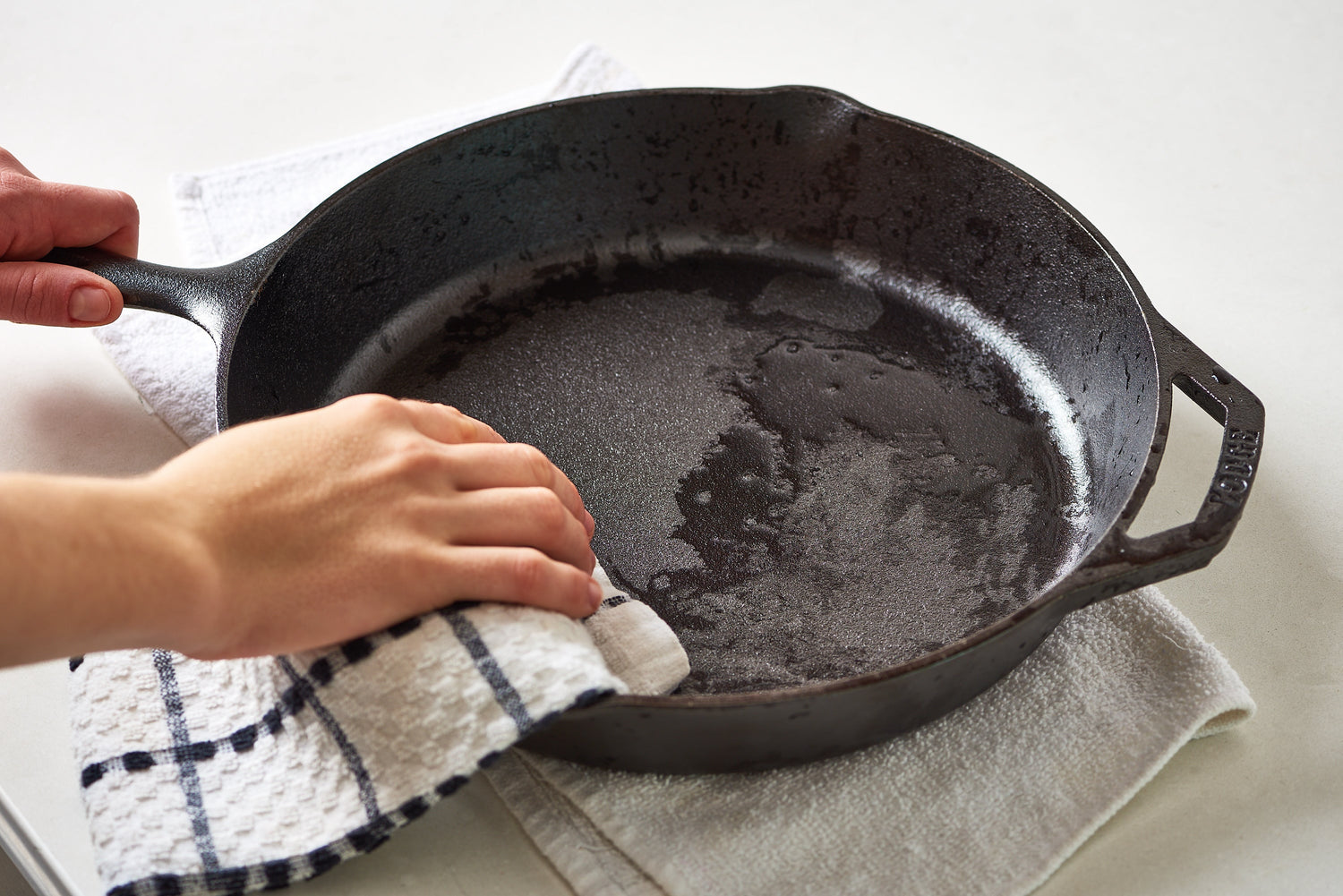For kitchen professionals, mastering the technique of seasoning cast iron cookware is essential. When you face the dilemma of how to fix uneven cast iron seasoning, it can be frustrating, especially when you're striving for that perfect sear or that non-stick finish. Having uneven seasoning can lead to a range of cooking issues. Fear not, with the right knowledge and techniques, you can restore your cast iron to its former glory. Lets dive into this culinary conundrum!
Before we begin, it's important to understand what seasoning is. Seasoning refers to the process of applying an oil layer to your cast iron, which is then heated to form a natural non-stick surface. When this layer becomes uneven due to improper maintenance or usage, its time to learn how to fix uneven cast iron seasoning. It is also crucial to understand the main factors leading to uneven seasoning, including temperature, the choice of oil, and the application method.

Understanding Cast Iron Seasoning
Cast iron cookware has been a staple in kitchens for centuries, prized for its durability and heat retention. However, it requires proper care to maintain its seasoning. First, lets explore more about the seasoning itself.
What is the Purpose of Seasoning on Cast Iron Cookware?
The purpose of seasoning is multifaceted. It protects the cast iron from rust, enhances the flavor of food, and creates a non-stick surface. When the seasoning is uneven, it can lead to food sticking, uneven cooking, and an unappetizing appearance. This is why understanding how to fix uneven cast iron seasoning is vital for professionals in the kitchen.
Identifying the Signs of Uneven Seasoning
Recognizing uneven seasoning is the first step in knowing how to address the issue. Below are common signs:
- Food sticking to the surface.
- Black spots or patches, indicating burnt oil.
- A dull or patchy appearance on the cooking surface.
- Rust spots or areas where you see bare metal.
Common Causes of Uneven Seasoning
Before you can effectively fix uneven seasoning, its important to know what caused it. Here are some factors:
- Temperature fluctuations: High temperatures can burn the oil, while low temperatures may not allow the oil to properly polymerize.
- Poor oil selection: Different oils have varying smoke points, which affects how they season cookware.
- Improper application: Too much oil or uneven application can lead to inconsistent seasoning.
How to Fix Uneven Cast Iron Seasoning
Now that we have explored the underlying issues, it's time to delve into the practical approach to fixing that uneven cast iron seasoning. Follow these steps carefully:
Step 1: Clean Your Cast Iron
The first thing to do is thoroughly clean your cast iron to remove the old uneven seasoning. This may involve:
- Using hot water and a stiff brush.
- If there are stubborn areas, consider using a mixture of water and baking soda.
Step 2: Dry Completely
Ensure that your cast iron is completely dry before proceeding. Any residual moisture can disrupt the seasoning process. You can place it on a low heat on the stovetop for a few minutes to evaporate any remaining water.
Step 3: Choose the Right Oil
Selecting the right oil is crucial. Palm oil, flaxseed oil, and grapeseed oil are popular choices due to their high smoke points. Avoid oils with lower smoke points, as they might burn during the seasoning process. Learn more about oil choices.
Step 4: Apply Oil Thinly
Using a paper towel, apply a thin layer of oil over the entire cooking surface. Ensure its an even coat; too much oil will cause pooling. If you have applied too much, wipe it down until it appears nearly dry.
Step 5: Heat the Cast Iron
Now, its time to heat your cast iron:
- Place it upside down in the oven to prevent oil from pooling inside.
- Set the oven to 450F (230C) and allow it to bake for at least one hour.
- After an hour, turn off the oven and leave the cookware inside to cool.
Step 6: Repeat if Necessary
You might need to repeat this process several times to achieve a uniform surface. Don't be discouraged if it doesn't look perfect after the first attempt!
Maintaining Your Seasoned Cast Iron
Regular maintenance is key to prolonging the life of your cast iron:
- Avoid washing with soap; instead, scrub with hot water and a brush.
- Dry immediately and apply a small amount of oil after each use to maintain the seasoning.
- Store in a dry place.
FAQs
1. How do I know if my seasoning is uneven?
Signs include food sticking, black patches, rust, and an uneven surface texture.
2. What oil is best for seasoning?
Oils with high smoke points like flaxseed, grapeseed, or canola oil are recommended.
3. How often should I re-season my cast iron?
It depends on usage, but generally, re-seasoning is done every few months or when you notice issues.

Conclusion
Fixing uneven cast iron seasoning is crucial for kitchen professionals aimed at achieving optimal cooking results. By understanding the causes, identifying problems, and following the steps outlined, you can maintain a perfectly seasoned cast iron. For a deeper dive into related topics, refer to baking times, smoking issues, and redoing seasoning. With the right precautions and maintenance, your cast iron can be as good as new!
As an Amazon Associate, I earn from qualifying purchases.





Leave a comment
This site is protected by hCaptcha and the hCaptcha Privacy Policy and Terms of Service apply.